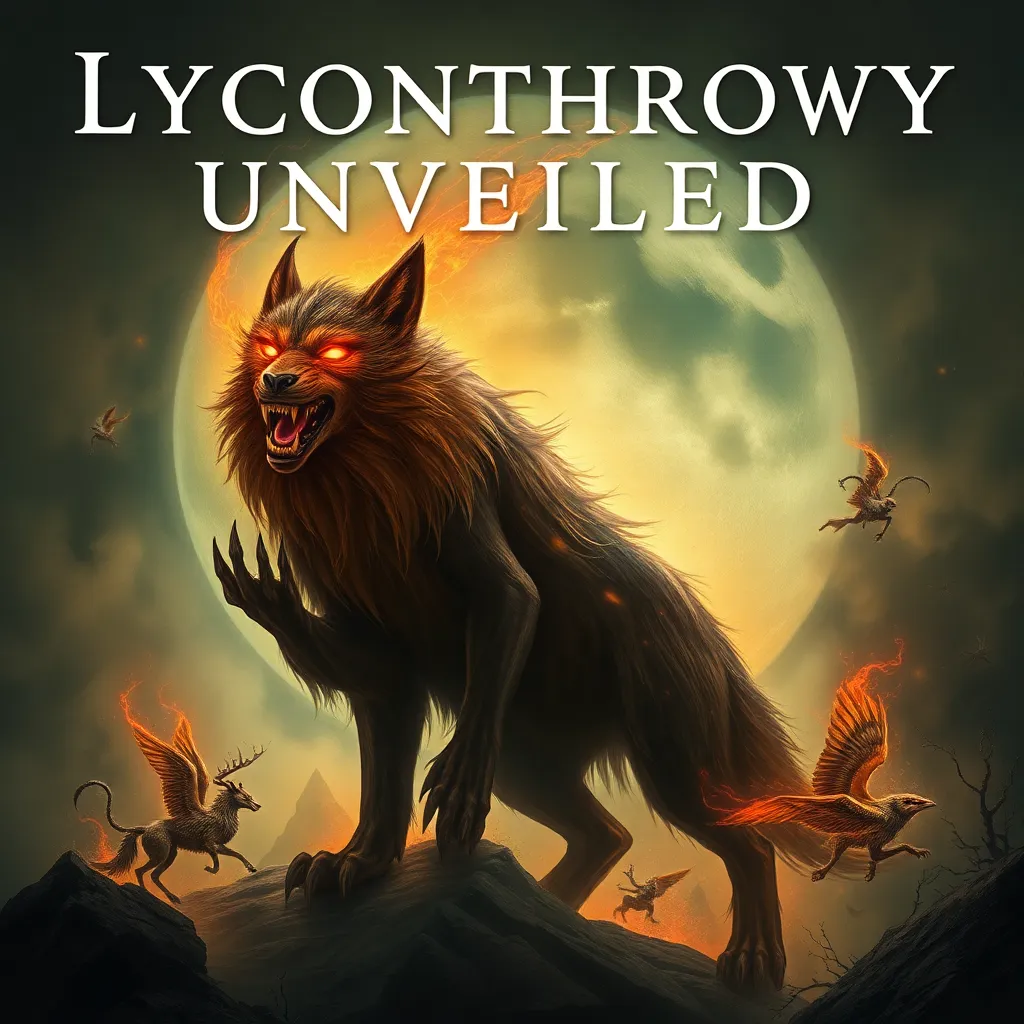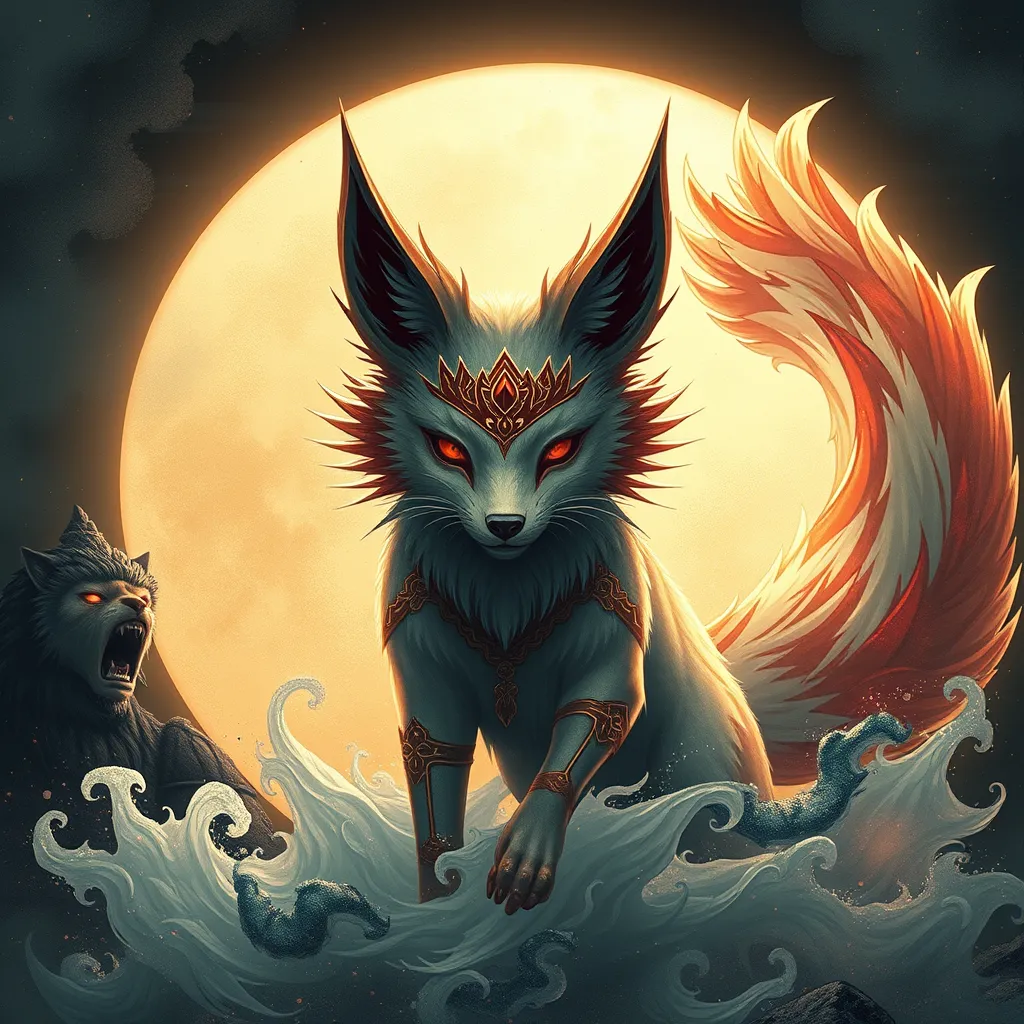Lycanthropy Unveiled: The Science, Myth, and History of Shapeshifting
I. Introduction
Lycanthropy, commonly associated with the transformation of humans into wolves or wolf-like creatures, is a fascinating phenomenon that exists at the crossroads of myth, culture, and psychology. This term derives from the Greek words “lykos” (wolf) and “anthropos” (human), and it has captivated human imagination for centuries. The cultural significance of lycanthropy extends beyond mere folklore, intertwining with various societal beliefs and historical contexts.
The purpose of this article is to delve into the historical roots, mythological framework, psychological perspectives, and scientific explanations of lycanthropy, as well as its representation in modern culture. By exploring these themes, we can gain a deeper understanding of why the legend of shapeshifting continues to resonate with us today.
II. Historical Roots of Lycanthropy
The concept of lycanthropy has ancient origins, with many civilizations documenting their beliefs in shapeshifting. These beliefs often reflect the cultural and environmental contexts of the time.
A. Ancient civilizations and their beliefs about shapeshifting
- Mesopotamian and Greek myths: Ancient Mesopotamian texts mention beings that could transform into wolves. In Greek mythology, the story of Lycaon, who was turned into a wolf by Zeus as punishment, highlights the theme of divine retribution linked to transformation.
- Norse and Celtic influences: Norse mythology features the tale of Fenrir, a giant wolf, while Celtic folklore includes stories of warriors who could shapeshift into wolves, often associated with magical practices and druidic traditions.
B. The evolution of lycanthropy in folklore
As cultures evolved, so did the narratives surrounding lycanthropy. Folklore from different regions often shares common themes, such as the duality of human nature and the struggle between civilization and primal instincts.
- Regional variations: In some cultures, lycanthropy is seen as a curse, while in others, it is a gift or a mark of nobility.
- The role of storytelling: Oral traditions and storytelling have been pivotal in shaping perceptions of lycanthropy, often serving as cautionary tales about the consequences of losing one’s humanity.
III. The Mythological Framework of Shapeshifting
Lycanthropic legends share several characteristics that define the mythological framework of shapeshifting. These myths often serve to explore deeper themes about identity, morality, and the nature of humanity.
A. Common characteristics of lycanthropic legends
- Transformations often occur during specific times, such as full moons or certain rituals.
- Lycanthropes typically exhibit a loss of control over their actions when transformed.
- Shapeshifting is frequently linked to curses, punishment, or a rite of passage.
B. Analysis of famous lycanthropic figures in mythology
Several figures in mythology exemplify the archetype of the werewolf and other shapeshifting beings:
- The werewolf archetype: Often portrayed as a tragic figure, the werewolf embodies the conflict between humanity and primal instincts.
- Other forms of shapeshifting: Witches in folklore are often depicted as having the ability to transform into animals, while Native American skinwalkers are believed to possess the power to shapeshift into various animal forms.
IV. The Psychological Perspective
Lycanthropy is not only a cultural and mythological phenomenon but also has psychological dimensions. It can manifest as a clinical condition known as clinical lycanthropy, where individuals believe they can transform into animals.
A. Lycanthropy as a psychological phenomenon
- Clinical lycanthropy and its symptoms: Individuals may exhibit behaviors associated with animals, such as growling or howling, and experience delusions of transformation.
- Case studies and historical accounts: Historical accounts of individuals claiming to be werewolves often reveal underlying mental health issues, such as schizophrenia or severe dissociative disorders.
B. The intersection of mental health and cultural beliefs
The perception of lycanthropy in various cultures can influence how individuals with such psychological conditions are treated. In some societies, these beliefs may lead to stigmatization, while in others, they may be viewed as a form of spiritual experience.
V. Biological and Scientific Explanations
While lycanthropy is often regarded as a myth, there are biological and scientific explanations that can shed light on the origins of these legends.
A. The role of genetics and evolution in shapeshifting myths
Some scientists suggest that the traits associated with lycanthropy may have evolutionary roots, with certain genetic conditions influencing physical appearance and behavior.
B. Examining the plausibility of transformation
- Genetic conditions that influence physical appearance: Conditions such as hypertrichosis, which causes excessive hair growth, may have contributed to the belief in werewolves.
- Animal behavior and human psychology: The primal instincts and behaviors of wolves may resonate with aspects of human psychology, leading to the development of lycanthropic myths.
VI. Lycanthropy in Modern Culture
In contemporary society, the fascination with lycanthropy persists in various forms of media, reflecting changing attitudes towards these ancient myths.
A. Representation in literature, film, and television
Werewolves have been popularized in literature and film, often depicted as tragic figures caught between two worlds. From classic horror films to modern fantasy series, the werewolf archetype continues to evolve.
B. The resurgence of interest in werewolves and shapeshifters
Recent years have seen a renewed interest in werewolf mythology, often blending traditional elements with contemporary storytelling, resulting in new interpretations of these age-old legends.
C. Impact of contemporary society on traditional myths
Modern society’s fascination with identity, transformation, and the duality of human nature has reinvigorated the myth of lycanthropy, allowing it to adapt to contemporary themes and issues.
VII. The Intersection of Science and Myth
The relationship between science and myth is complex, with each influencing the other in a continuous dialogue.
A. How scientific discoveries influence our understanding of folklore
Scientific advancements in psychology, genetics, and anthropology have provided new insights into the origins and meanings behind lycanthropic myths, reshaping our understanding of these stories.
B. The role of myth in shaping scientific inquiry
Myths often inspire scientific exploration, prompting researchers to investigate the psychological and biological phenomena that underpin these legendary narratives.
C. The ongoing dialogue between myth and reality
The coexistence of myth and science enriches our understanding of human experience, illustrating how deeply rooted beliefs can shape perceptions of reality.
VIII. Conclusion
In summary, the exploration of lycanthropy reveals a rich tapestry of historical, cultural, psychological, and scientific threads. From ancient myths to modern interpretations, the legacy of shapeshifting continues to capture our imagination and reflect our deepest fears and desires.
The enduring legacy of lycanthropy in culture and science serves as a testament to humanity’s fascination with transformation and the complexities of identity. As we navigate the intersection of myth and reality, we are reminded of the timeless narratives that connect us to our primal instincts and the mysteries of the human experience.



